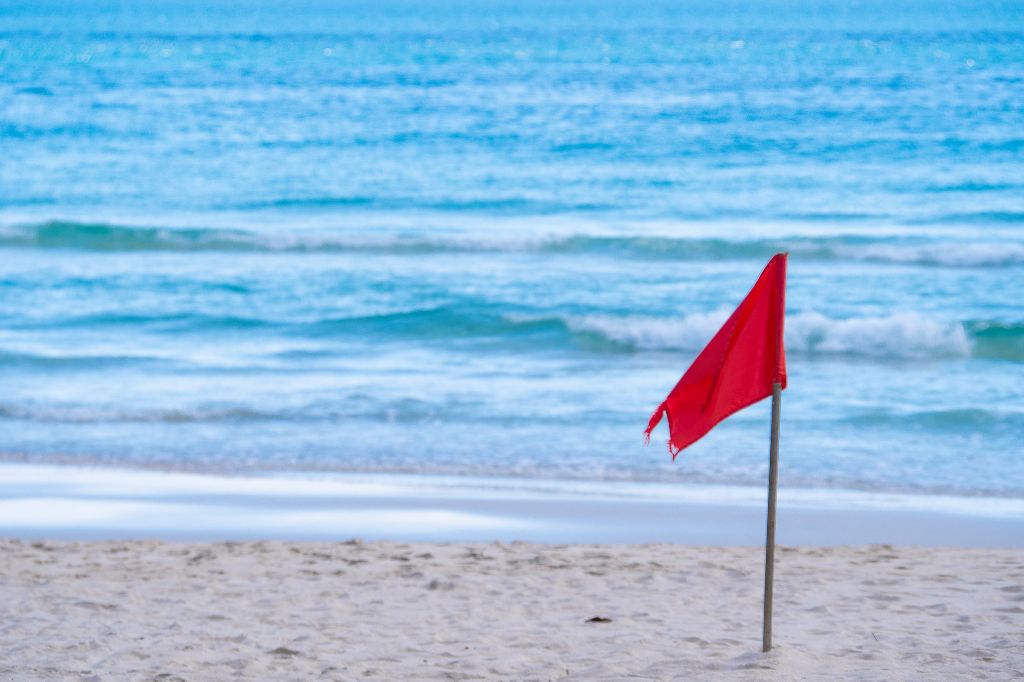The summer is here and people looking for a day in the sun will flock to their nearest beach. However, before you can start basking in the sun’s glory, you might want to keep your eyes open for beach flags and signs; some of which can spell doom for your visit. Understanding and heeding colored flags and signs can help make sure you and your family are safe.
Red Flags
Whereas Beach Safety Signs are fairly straightforward and easy to understand, colored flags may be a little more difficult to navigate because they don’t utilize text or symbols. The one flag you should absolutely be aware of is the high hazard red flag.
Red flags are the most serious of all beach warning flags and warn swimmers of severe hazards in the water. Two red flags mean that the water is closed to swimming because conditions are too dangerous. One red flag, meanwhile, means that the surf is high, the currents are dangerous, or both. You should use extreme caution if you decide to swim while a single red flag is flown.
Yellow Flags
These flags are used to indicate water conditions that are non-life threatening, but may be rough. You might see a yellow flag during potentially high surf, hazardous currents, or unsafe undertows. Swimmers should exercise caution when they see this flag at the beach.
Even if you are swimming near lifeguards, which is always advisable, swimmers who are uncomfortable in the water should wear a life jacket during yellow-flag days. Moreover, if your beach has a Sudden Drop Off Sign or Slippery Rocks Sign, you’ll generally see a permanent yellow flag.
Green Flags
Even on the most beautiful of days, the ocean is unpredictable and hazards, no matter how small, still exist. A green flag on the beach indicates that these hazards are minimal and the water is safe to swim in.
Blue or Purple Flags
You may see a dark blue or purple flag on the beach. These flags indicate that there is potentially dangerous marine life, such as jellyfish or stingrays, prowling near swimming grounds. This flag does not represent the presence of sharks, however. If sharks are present, red flags will be hoisted or a shark sighted sign will be posted.
If you see a flag or sign at the beach and you’re not sure of its meaning, ask a lifeguard for an explanation or look for an indicator key nearby.

